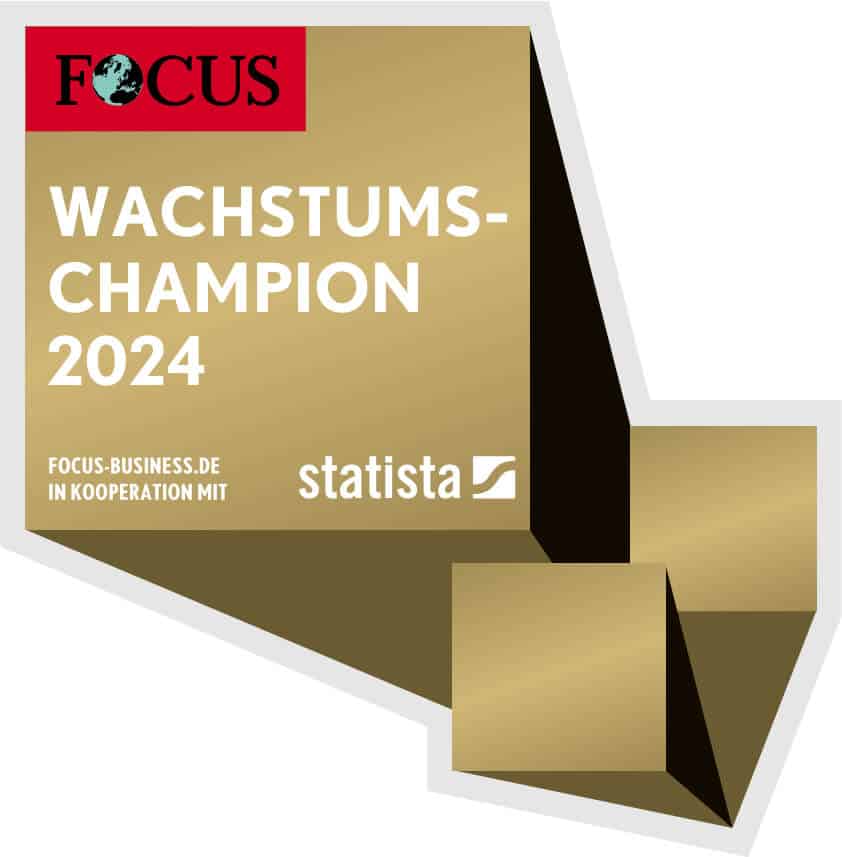Is your corporate communication fit for the future? Your company blog is an important element in your public image - both for interested parties and customers as well as for (future) employees. And this potential needs to be actively leveraged and used in a targeted manner. In the first part of the interview with Thomas Riemann-Seibert (TRS) and Oliver Foitzik (OFO) was specifically about the corporate blog and its challenges: A targeted use of content & blog marketing follows certain rules. The following, second part of the conversation deals with the corporate communication of the future in a broader sense: This is what companies are facing, these are options that work, and this is how you exploit the full potential of your opportunities.
Corporate communication must pick up the target group correctly and inspire them - Interview with Thomas Riemann-Seibert and Oliver Foitzik
The way people deal with information is fragmented - this is partly due to the major differences between the individual channels. What does this mean for corporate communication in the future?
TRS: The customer journey has changed significantly in recent years. Today, a customer searches for solutions to a problem online and the person from whom they find the solution is initially likeable. And they will remember them when they want to buy something. In a nutshell, this is a new dimension. This is why companies should urgently switch their communication from outbound to inbound. Because the better the content that a company presents, the more likely it is to be found by customers. And nowadays, customers have already had two, three or more points of contact on their journey before they buy.
OFO: The big goal must be to have a presence on all channels. Furthermore, although these are fragmented, they can be linked in such a way that they offer the user added value. This means that each individual presence must firstly be of a high quality. Secondly, it must appeal to the user. An outstanding look and feel is essential to make them feel comfortable. If these points are right, the professional appearance can also succeed and the customer will be convinced.
In your opinion, what are the biggest challenges that companies will face with the communication of tomorrow?
OFO: First and foremost, companies must realize that they are not simply writing for the search engines: Content marketing is geared towards customers and their needs. Of course, this is a completely different target group for every company. This means that there is no universal solution for the right corporate communication of the future. It is therefore a matter of finding the best for you and doing professional, high-quality work. High quality standards and user perception have priority here.
TRS: For me, the biggest challenge for a company is the regular production of high-quality content, combined with presentation via search engines and the right social media channels. Offering customers added value without them paying for it is still an impossibility for many companies today. But this is the only way to do business in the future. Earning the trust of customers through good content should be a top priority for all companies.
What is important for a solid corporate communications strategy?
TRS: Professionalism definitely comes first for all publications. You can't bore the customer, and you don't have to: added value can certainly be combined with fun. For my corporate communications strategy to work, I have to show the customer that I'm passionate about what I do. In this way, even drier topics can be presented in an appealing way.
OFO: Solid corporate communication is always about professionalism and quality. Companies must present a clear profile, and do so continuously and sustainably. On the one hand, this means publishing high-quality content. On the other hand, it also means looking at the readers and interpreting their behavior.
Which aspects are underestimated or even forgotten when planning and implementing efficient corporate communications, especially with regard to new media?
OFO: The major goals are to generate and increase visibility and reach. How well the measures work in this respect must in turn be measured, interpreted and used. Today, professional monitoring is simply a must: there are numerous tools that break down user behavior. Based on these results, a strategy can and must be continuously adapted. The success of a campaign stands and falls with monitoring. However, the top priority is to cover the fixed portfolio of instruments, i.e. company website, blog, social media and so on.
TRS: Most people simply underestimate the work that good corporate communications requires. Far too often the motto is that you can do it on the side or have it done by a few students. I'm not saying anything against students, but good corporate communications with all its aspects is hard work and requires full commitment. This is the only way to really keep up to date with the latest possibilities and only then is sustainable success guaranteed.
Social signals are also an important ranking factor for a company's SEO. In your opinion, which platforms are essential for this?
TRS: It depends a little on the type of business, but Facebook and Twitter are generally at the forefront. For the local baker, that would be perfectly adequate. For companies with a predominantly business customer or B2B focus, XING and LinkedIn, for example, are relevant platforms. And YouTube is a must for anyone who works with video: It is not without reason that it has now become the second largest search engine after Google. For companies that primarily operate locally, comparison portals and business directories are also a useful addition: they should definitely be found.
Are there also networks that companies should stay away from?
OFO: There is no general answer to this question. When selecting platforms, the main question is whether the people or target group that should be addressed can be found on this platform. Networks that primarily deal with a completely different topic are therefore not worthwhile. Presence on other channels is not just about ranking, but also about reach and the associated reach. The time and resources that would have been invested in less helpful networks pay off much more when expanding more helpful presences.
To what extent can the content on the company blog also be used in other channels?
TRS: The blog itself is the centerpiece of corporate communication and the articles there should also be found in full or in part on the social media channels. Of course, I can also promote particularly good articles directly on Google or Facebook. Linking the content to social media channels increases traffic to the blog extremely quickly.
OFO: The user's perspective is crucial in this task. It is therefore particularly useful to link the posts to the networks in advance and to integrate social media buttons into the blog. This lowers the inhibition threshold for readers to share blog posts. Another tool is the newsletter: the latest publications should definitely be advertised in it. However, much more is possible, especially in terms of addressing interested parties and customers in a targeted manner, as well as ensuring lasting customer loyalty.
Finally, a little game. I give you both a total of seven terms or word combinations and you answer briefly and succinctly!
- Corporate communication of the future:
TRS: Inbound Marketing
OFO: 360 degrees across all channels - integrated, networked and targeted
- Company blog:
OFO: Essential in today's world. Not a sprint, but like running a marathon
TRS: The heart of communication
- New media:
TRS: Diversity is in demand
OFO: The right and coordinated use makes the difference
- Leadership and corporate communication:
OFO: Communication leads
TRS: Good combination
- Social media:
TRS: Absolutely
OFO: With the right platforms - and coordinated with each other - a lot is possible!
- Change in the company:
OFO: People find change difficult, but necessary
TRS: Still far too sluggish
- Your wishes for 2017:
TRS: That companies recognize their opportunity
OFO: Companies should take a more active approach to communication. And communication is more than just having a website.
Thank you very much, Mr. Riemann-Seibert and Mr. Foitzik, for these comprehensive comments on the topic of corporate communications of the future! We wish you a successful collaboration and much pleasure in maintaining the TCI blog!
The interview with Thomas Riemann-Seibert and Oliver Foitzik led the TCI editorial team. Please also read the first part of the interview on the topic of company blogs.
(Cover image: © opolja | fotolia.com)


